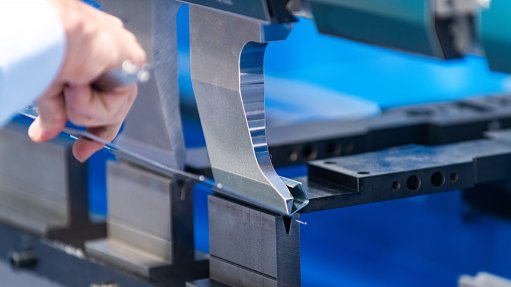
ADVANTAGEOUS TOOL Companies can determine the potential energy savings servo-hydraulics can realise for a specific machine by using an online energy calculator Baumüller introduced this year
As most machinery is manufactured overseas, there is not much local demand for servo-hydraulic technology, but “massive” energy savings can be achieved, says local industrial automation solutions provider Motion Tronic director Bradley Douglas.
Motion Tronic is the South African representative of Germany-headquartered electric automation and drive systems manufacturer Baumüller, which advocates changing from hydraulic to servo-hydraulic technology.
Depending on the application, changing from hydraulic to servo-hydraulic technology on a hydraulic machine could save more than 50% in energy a cycle, Baumüller said in a press release published in January.
Changing to servo-hydraulics on a hydraulic machine enables the main motor to regulate speed depending on pressure or flow needs.
Comparatively, old systems constantly operate at full speed, dumping hydraulic oil, which serves as an energy transfer or power transmission medium, back into the main tank, wasting energy in the process, explains Douglas.
Classic hydraulic applications do, however, have many advantages, with the hydraulics ensuring high force and power density, and the activation of many actuators using one drive.
“The drive elements are robust and comparatively low cost. But, in many cases, including hydraulic and hybrid plastics machines and presses, servo-hydraulic drive solutions can further improve the machine’s efficiency and performance,” states Baumüller.
Servo-hydraulic machines combine the advantages of hydraulic power transfer with the
features of servo-drive technology, allowing for high power densities, compact drive units, and cost-effective and robust drive elements combined with dynamic and precise speed control.
“The energy consumption of the drive system thus reduces significantly and also allows for shorter cycle times, greater accuracy, as well as lower noise development,” explains Baumüller.
Besides the associated energy saving benefits, demand for servo-hydraulic technology is driven by the need to modernise by adopting Fourth Industrial Revolution technology and the reduction of hydraulic complexity and parts, adds Douglas.
To assist companies in determining potential benefits, Baumüller introduced an online energy calculator this year through which the savings for a specific machine can be calculated.
While Motion Tronic’s customers have not used the Baumüller energy calculator, owing to the types of projects undertaken by the company this year, Motion Tronic does recommend its use to calculate customer-specific savings and requirements.